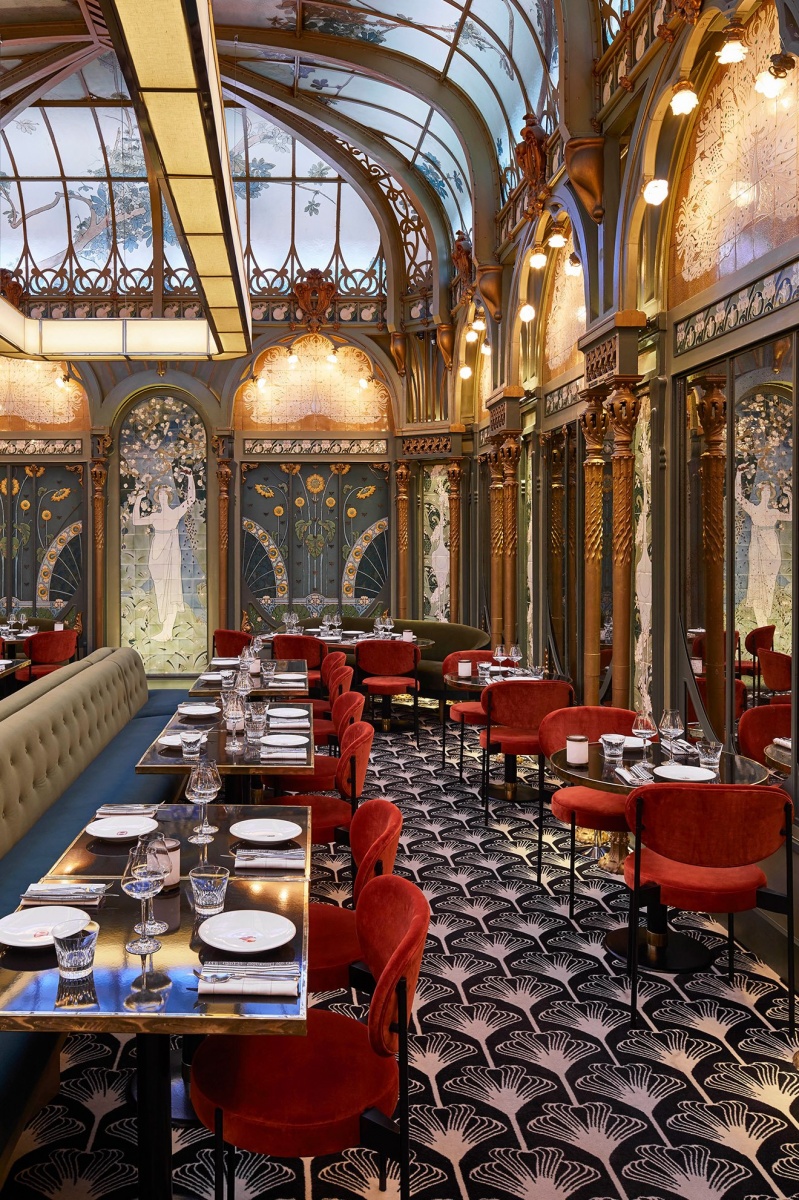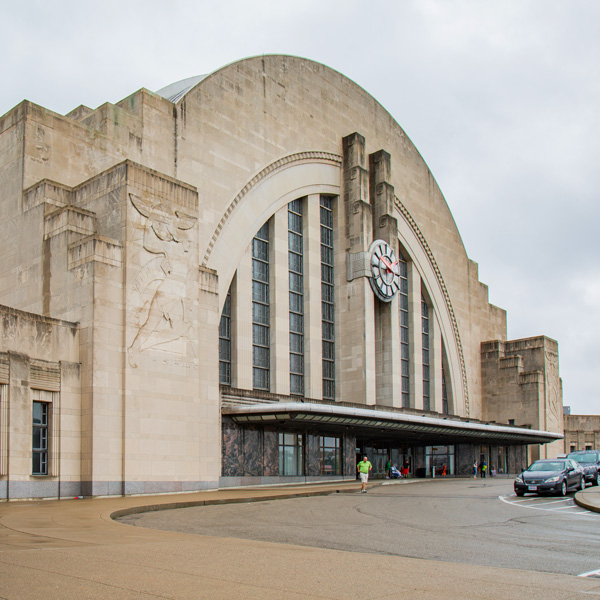What is Art Deco?
Art Deco, a prominent art movement of the early 20th century, was a fusion of modernist styles with luxurious and elegant design. It emerged after the First World War and lasted until the onset of the Second World War. This movement influenced the design of many objects such as buildings, furniture, jewelry, and cars. In this article, we will take a closer look at Art Deco and its features.
Niagara Mohawk Building in Syracuse, New York
Art Deco is characterized by its use of bold geometric shapes, vivid colors, and a fascination with machines and technology. The movement was born out of a desire to break away from the ornate, curvilinear forms of Art Nouveau and embrace a more streamlined, industrial aesthetic. The style was also heavily influenced by the discovery of King Tutankhamun’s tomb in 1922, which sparked a craze for all things Egyptian.
One of the defining features of Art Deco is its use of symmetrical, geometric forms. This can be seen in the iconic skyscrapers of the period, such as the Chrysler Building in New York City. These buildings often feature setbacks, vertical lines, and streamlined shapes that give them a sleek, futuristic appearance.

Beefbar Restaurant in Paris, France
Another key characteristic of Art Deco is the use of bright, bold colors. These were often used in contrast to black, white, and metallic accents, creating a striking and dynamic effect. In addition to color, the use of precious and exotic materials such as ivory, jade, and gold was also common.
Art Deco was not just limited to architecture and design, but also influenced the world of fashion and jewelry. The style was characterized by sleek, streamlined shapes, and the use of expensive materials such as platinum and diamonds. Jewelry from this period often featured bold, geometric shapes, and intricate patterns.
In conclusion, Art Deco was a significant art movement that revolutionized the world of design, architecture, and fashion. Its bold geometric shapes, vivid colors, and luxurious materials continue to influence contemporary design today. If you appreciate Art Deco, you may want to check out Oruga’s collection of Art Deco-inspired jewelry and art pieces that capture the essence of this timeless movement.
How did Art deco effect Our Home Town, Cincinnati?
In the 1920s and 1930s, Cincinnati experienced a building boom that saw the construction of many Art Deco buildings. The city's downtown area, in particular, was transformed by the new style. Architects and designers embraced Art Deco's use of bold geometric shapes, streamlined forms, and lavish ornamentation to create buildings that were both functional and aesthetically pleasing.

Carew Tower in Cincinnati, Ohio. Shot from Fountain Square
One of the most notable Art Deco buildings in Cincinnati is the Carew Tower, a 49-story skyscraper completed in 1930. Designed by the firm W.W. Ahlschlager & Associates, the tower features a distinctive stepped design, with setbacks that create a series of terraces as the building rises. The tower's lobby is also an excellent example of Art Deco design, with its gleaming marble floors, intricate metalwork, and ornate ceiling.

Union Station now The Cincinnati Children's Museum
Other notable Art Deco buildings in Cincinnati include the Union Terminal train station, which opened in 1933, and the Netherland Plaza Hotel, which was completed in 1931. The Union Terminal, which now serves as the Cincinnati Museum Center, features a stunning rotunda with a mosaic tile floor, while the Netherland Plaza Hotel's lobby is a masterpiece of Art Deco design, with its sleek black-and-white marble floors and soaring ceiling.

Inside Union Station now The Cincinnati Children's Museum
Art Deco also had a significant influence on the design of everyday objects in Cincinnati. From radios and toasters to automobiles and furniture, the style's streamlined, modern aesthetic was embraced by designers and consumers alike.
Overall, Art Deco left an indelible mark on Cincinnati's built environment, shaping the city's skyline and adding to its unique architectural heritage.
What is Art Nouveau?
Art Nouveau, which means "New Art" in French, was an international art movement that flourished from the 1890s to the early 1910s. It was characterized by a sinuous, flowing style inspired by nature, with curved lines, floral and plant motifs, and asymmetrical designs.
Origins and Characteristics of Art Nouveau
Art Nouveau was a reaction to the academic art of the 19th century and the industrialization of society. It emerged as a rebellion against the rigid academic art that emphasized historical themes and classical forms. The movement was influenced by the Arts and Crafts Movement in Britain and the Viennese Secession in Austria.
Art Nouveau artists sought to create a new style that reflected the modern world and its technologies, while also celebrating the beauty of nature. They drew inspiration from the forms and patterns found in plants, flowers, and other natural phenomena.
The style was characterized by its use of asymmetrical forms, curving lines, and sinuous shapes. Art Nouveau artists used a wide variety of materials, including glass, ceramics, metalwork, and jewelry, to create decorative objects that were both functional and beautiful.
Art Nouveau in Architecture
One of the most significant aspects of Art Nouveau was its influence on architecture. The movement brought a new sense of organicism to architecture, with buildings that appeared to grow out of the ground, with undulating curves and organic motifs.
In many cities, Art Nouveau buildings were constructed, featuring elaborate facades, ornamental ironwork, and stained glass windows. Art Nouveau architects sought to integrate art and architecture, creating buildings that were both functional and aesthetically pleasing.
Art Nouveau in Design
Art Nouveau had a significant impact on the design of everyday objects. It transformed the decorative arts, with its emphasis on flowing lines, stylized floral motifs, and natural forms.
Art Nouveau artists created furniture, lamps, and other decorative objects that were both functional and beautiful. They experimented with new materials and techniques, such as bentwood furniture, and incorporated decorative elements such as inlaid wood, stained glass, and carved stone.
Art Nouveau Today
Today, Art Nouveau remains a significant influence on art and design. Many of the works created during the Art Nouveau movement are considered masterpieces of design, and are highly sought after by collectors.
Art Nouveau architecture can be found in many cities around the world, and continues to inspire contemporary architects. The movement's emphasis on organic forms and the integration of art and architecture continue to influence contemporary design.
In conclusion, Art Nouveau was a revolutionary art movement that rejected the academic art of the 19th century and emphasized the beauty of nature. It had a significant impact on architecture, design, and the decorative arts, and continues to inspire artists and designers today.
What is Pop Art?
Pop art is an art movement that emerged in the 1950s and 1960s in Britain and the United States. It was a response to the post-war consumer culture and mass media, which heavily influenced the artists. Pop art is known for its use of bright colors, bold shapes, and popular imagery, such as celebrities, advertising, and everyday objects. This guide will take you through the history, characteristics, and key figures of pop art.
History of Pop Art
Pop art emerged in the mid-1950s in Britain and soon spread to the United States. It was a reaction to the dominant art movements of the time, such as Abstract Expressionism, which focused on the artist's inner emotions and the medium's physical qualities. Pop art, on the other hand, was inspired by the commercial culture and the proliferation of images in mass media, advertising, and popular culture.
Characteristics of Pop Art
Pop art is characterized by its use of bold colors, geometric shapes, and everyday objects. The artists used commercial printing techniques, such as screen printing, to create multiple versions of the same image, which were often reproduced on a large scale. The imagery was often appropriated from popular culture, such as comic books, advertisements, and Hollywood movies.
Key Figures of Pop Art
Andy Warhol is perhaps the most famous figure associated with pop art. He is known for his vibrant screen prints of celebrities, such as Marilyn Monroe and Elvis Presley, as well as everyday objects, such as Campbell's soup cans and Brillo boxes. Other key figures of pop art include Roy Lichtenstein, who used comic book imagery in his paintings, and Claes Oldenburg, who created sculptures of everyday objects, such as hamburgers and typewriters.
Conclusion of Pop Art
Pop art is a colorful and lively art movement that celebrates the mass culture and commercial imagery of the post-war era. Its bold aesthetic and playful approach to everyday objects continue to inspire artists today. Whether you are a fan of bright colors, bold shapes, or popular culture, pop art is sure to capture your attention and imagination.
What is Impressionism?
Impressionism is an art movement that emerged in the mid-19th century in France. It is characterized by a focus on capturing the fleeting impressions of light and color in a scene, rather than the precise details. Impressionist artists sought to convey the sensation of a moment and capture the changing atmosphere and mood of a scene. They often worked outdoors, en plein air, to capture the natural light and movement of the environment.
One of the key characteristics of Impressionist art is its use of broken color and loose brushwork. Rather than blending colors on the canvas, Impressionist artists applied small dots or strokes of color side by side, allowing the viewer's eye to blend them together. This technique, known as pointillism, gave Impressionist paintings a sense of movement and energy.
Impressionism was also characterized by its focus on everyday subjects and scenes from contemporary life, such as landscapes, urban streets, and leisure activities. Impressionist artists often depicted these scenes with a sense of spontaneity and informality, emphasizing the fleeting nature of modern life.
Art Impressionists
Some of the most famous Impressionist artists include Claude Monet, Pierre-Auguste Renoir, Edgar Degas, and Camille Pissarro. Their works continue to be celebrated for their innovative techniques and their ability to capture the beauty and complexity of the world around us.
Overall, Impressionism remains a beloved and influential art movement that continues to inspire artists today. Its focus on capturing the fleeting moments of life and its use of innovative techniques make it a timeless and captivating style of art.
What is Surrealism?
Surrealism is a cultural and artistic movement that emerged in the early 1920s in Europe, with Paris as its hub. This artistic revolution, which lasted for more than three decades, aimed to liberate the unconscious mind and explore the world of dreams, hallucinations, and the irrational.
Surrealism was born out of Dadaism, a movement that rejected traditional art and culture, and embraced the irrational and the absurd. Surrealists, however, went a step further by seeking to access the subconscious through various techniques such as automatic writing, free association, and dream analysis.
Some of the most notable surrealists include Salvador Dalí, René Magritte, Max Ernst, and Joan Miró. Their works often featured dreamlike and fantastical elements, juxtaposing ordinary objects in strange and unexpected ways. Surrealist art also frequently incorporated elements of surprise, humor, and social commentary.
Although surrealism was primarily an art movement, it had a significant impact on other areas such as literature, cinema, and even politics. The surrealists sought to challenge the prevailing social order and expose the contradictions and hypocrisies of bourgeois society.
In conclusion, surrealism remains a fascinating and influential movement in the history of art. Its impact can still be seen in contemporary art and culture, as artists continue to explore the boundaries of the subconscious and the irrational.
What is Abstract?
Abstract art is a genre of art that emphasizes the use of color, shape, and form to evoke emotions and visual sensations, rather than attempting to depict objects or scenes from the real world. It emerged in the early 20th century and has since become one of the most influential and widely recognized art movements of all time. Artists associated with abstract art include Wassily Kandinsky, Kazimir Malevich, and Piet Mondrian, among others.
One of the defining characteristics of abstract art is the use of non-representational forms and shapes. Unlike traditional art, which aims to accurately represent the world around us, abstract art is more concerned with exploring the possibilities of color, form, and texture. Many abstract artists also sought to challenge the conventional notion of art, exploring new and innovative ways of creating visual experiences.
The roots of abstract art can be traced back to the early 20th century, when artists such as Kandinsky and Malevich began to experiment with increasingly abstract forms. In the decades that followed, the movement grew and diversified, encompassing a wide range of styles and techniques.
Abstract art continues to be popular today, with artists around the world continuing to explore new and innovative ways of expressing themselves through color, form, and texture. Whether you're a seasoned art lover or a newcomer to the world of abstract art, there is always something new and exciting to discover in this endlessly fascinating genre.
- The Founders, Nolan and Preston
Twitter • Instagram • YouTube • Discord • TikTok
Sources
Cinydeco - Art Deco of Cincinnati
Cincinnati Art Deco - History with Slide show
Britannica - Impressionism, Surrealism, Abstract, Art Deco, Art Nouveau, Pop Art
Wikipedia - Impressionism, Surrealism, Abstract, Art Deco, Art Nouveau, Minimalism
Metmuseum - Impressionism, Art Nouveau
The Art Story - Surrealism, Pop Art, Minimalism
Art Land Magazine - Pop Art

